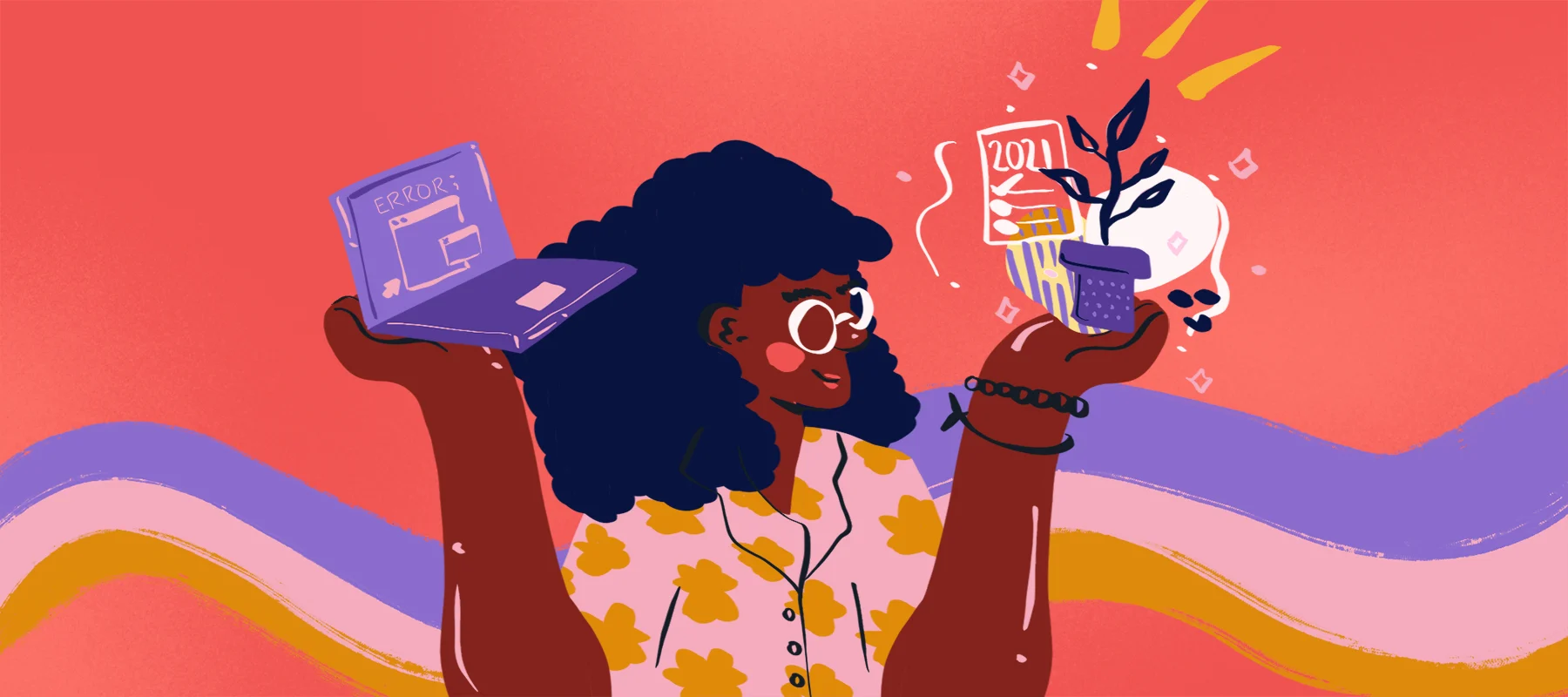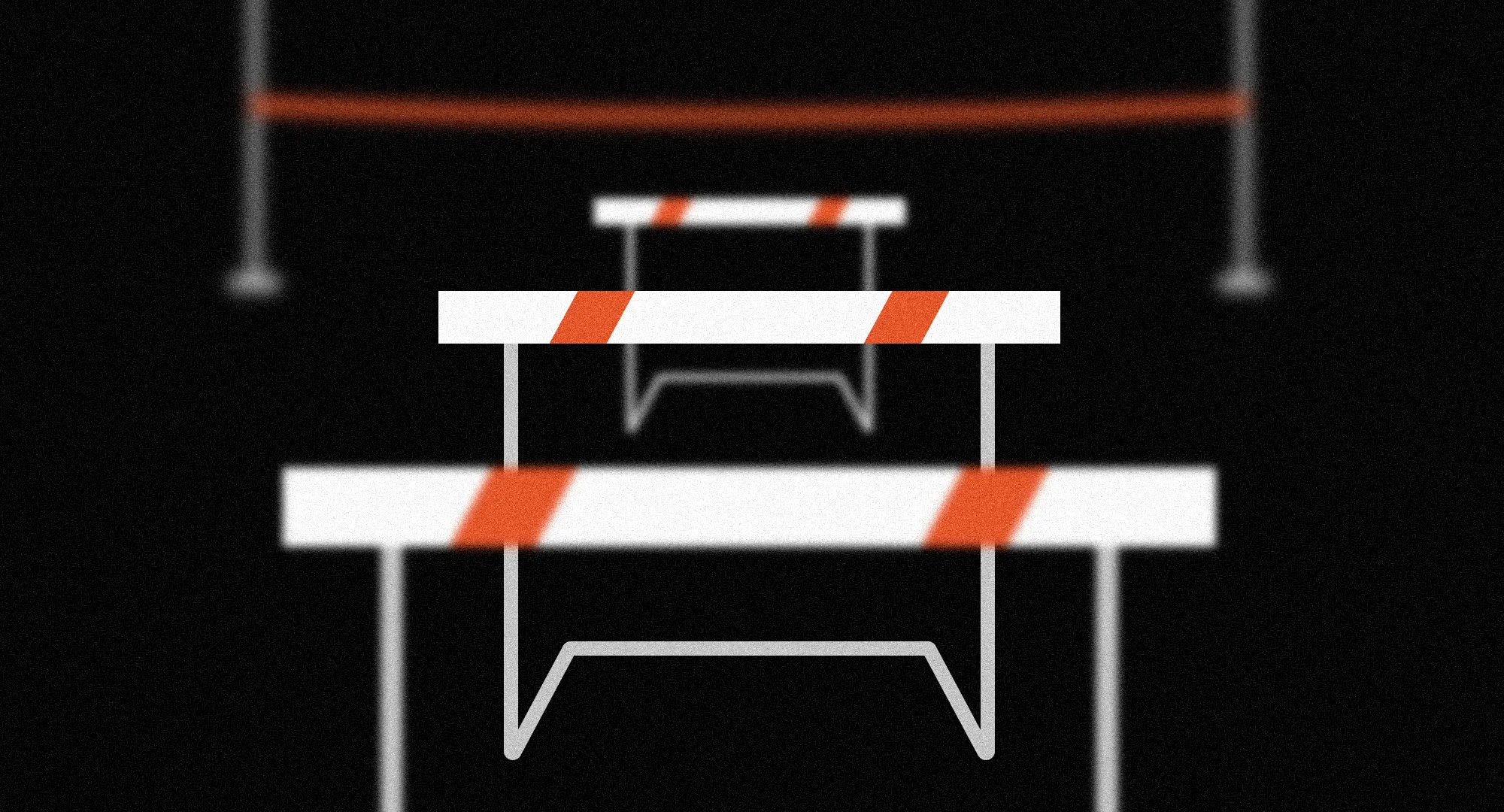Everyone is Creative: How to Build Your Own Creativity Roadmap
- 1 June 2021
- ByAnna Brones
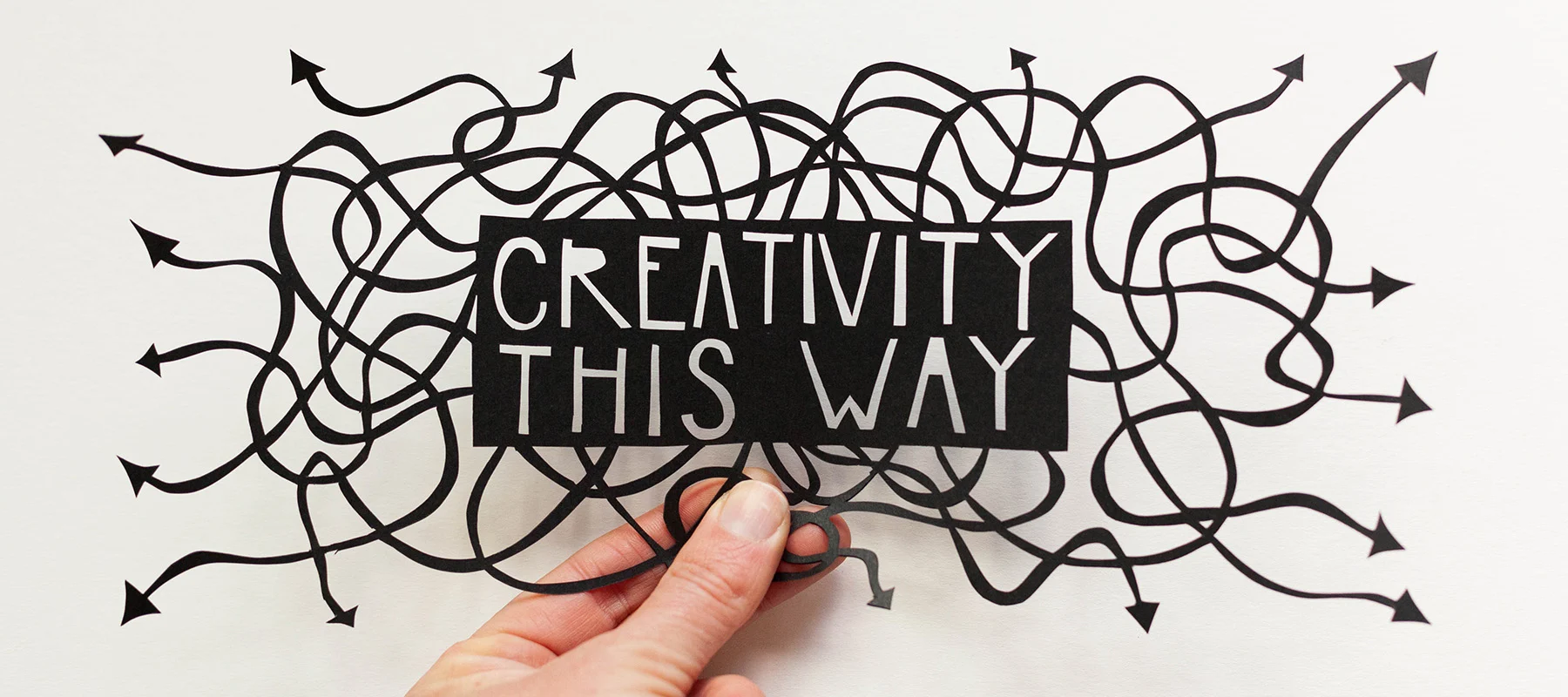
What makes us creative?
For so long, we’ve been influenced by the myth that creativity is a trait, something a select few are born with and that the rest of us can only dream about. We forget the one truth: as human beings, we all have the capacity for creativity.
Creative thinking is an essential part of who we are and how we function. Instead of a trait, creativity functions more like a muscle, one that needs to be trained, and used often. Creativity doesn’t just happen—we have to work at it, we have to keep our creative selves active.
While creativity looks different for everyone, there is a certain scaffolding that we can build to support us to help with the work of building our creative practice. In 1926, psychologist Graham Wallas outlined the four stages of the creative process, a theory that many still refer to today: preparation, incubation, illumination, and verification.
We begin by learning, collecting ideas. I like to think of this as the “gathering” phase; it’s a time when we are open to the world around us, our curiosity is heightened, and we have a sense of wonder. We welcome in new information and knowledge. Then we let all those things settle and allow them to marinate. This is our incubation stage, and it’s where we don’t make a conscious effort to focus on the question or problem at hand. We let our subconscious take over instead. Third comes illumination. This is the “aha moment” phase, the proverbial strike of inspiration. Then after the idea comes the work, the time when we see if what we have come up with has any legs, any potential.
You can guess where we tend to put most of our attention. As a culture, we are incredibly enamored with the illumination stage. It’s easy to fall in love with the concept of sitting around and eventually an incredible idea just comes to you, as if by magic. But while we can’t always account for where our ideas come from, this version of creative inspiration denies the importance of the first two stages. In fact we get so hung up on whether or not we’ll get a spark of an idea, that sometimes we even forget about these two stages entirely, and when we do, we lose our creative edge. In my mind, those first two stages are the most important. They provide us with our creative base, and they are less stages than they are an ongoing part of the process.
If you like formulas better, you might be interested in Dr. Ruth B. Noller’s symbolic formula for understanding creativity: C = fa(K,I,E). Noller was instrumental in the creation of the International Center for Studies in Creativity at The State University of New York College at Buffalo, and believed that creativity was not a trait, but an ability that could be taught. The formula held that creativity is a function of Knowledge, Imagination, and Evaluation. “Without knowledge, imagination cannot be productive,” Noller wrote along with her colleagues Sidney Parnes and Angelo Biondi in their book Guide to Creative Action. We need our creative base for our creativity to flourish.
Creative scaffolding might have some of the same features for everyone—routines and rituals, gathering information, a balance of input and output, practice, and then more practice—but every person who has put creativity to use in their daily life works differently. Everyone sources their inspiration from different places, and even if we stare down the same problem, we usually have varying ways of getting to the solution.
Your Creative Process is Your Compass
This is why it’s important for us to develop our own creativity roadmaps. Doing so provides the tools that help guide us through the things that keep us creative.
A roadmap is a strategic plan that helps us define a goal and figure out a way to get there. There is no one trick for creativity, no on/off switch, no magic pill, and how we show up creatively looks different for all of us. But no matter what our creative product is (a book, a song, a painting, a dance, etc.), it’s the process of creativity that is our vehicle for getting us there. Our goal then is to boost our creativity, to fuel it, to reinvigorate it.
While often helpful, goals can sometimes hinder us more than they can benefit us. If our goals are bucket list items, or “checkpoints” along our creative path, what happens if we don’t achieve them? Or what if working towards them they end up shifting? As one academic puts it, it can be more useful to consider goals like a compass and not like GPS. Fortunately, boosting our creativity isn’t a goal with an endpoint, it’s ongoing. That makes our creative process our compass, it helps us navigate in whatever creative work we are doing, wherever we are headed.
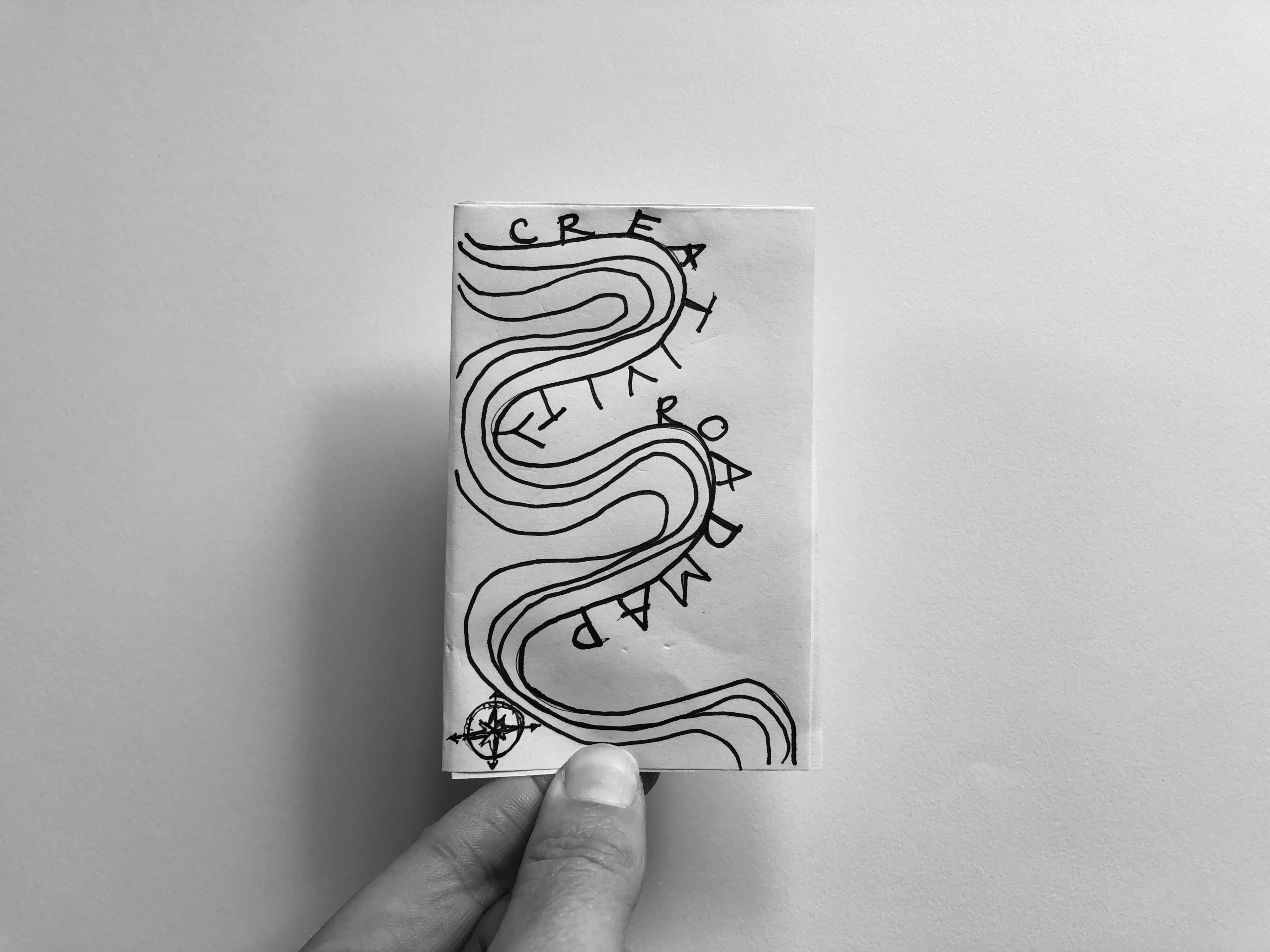
Make Your Creativity Roadmap
A creativity roadmap helps you to define not precisely where you are going, but how you are investing in your creative process.
Let’s start by writing and defining why creativity is important for us. At the top of a piece of paper, write "I need creativity because…" Write a list of all the reasons you can think of. This is your why, the reason that you’re committing to your creative process.
Grab another piece of paper and draw a line down the middle, creating two columns. On the top of the left side write, "I feel creative when..." Spend some time with this statement. Think about the moments that you feel creative, or creatively inspired. What are they? What are you doing? Write down a list of all the things you can think of that answer the question.
Once you have finished that list, move to the right column. At the top write, “I feel blocked when…” For this list, think about all those times that you feel stuck in a creative block, or just a bit “blah” about your work, or simply the moments when you feel uninspired.
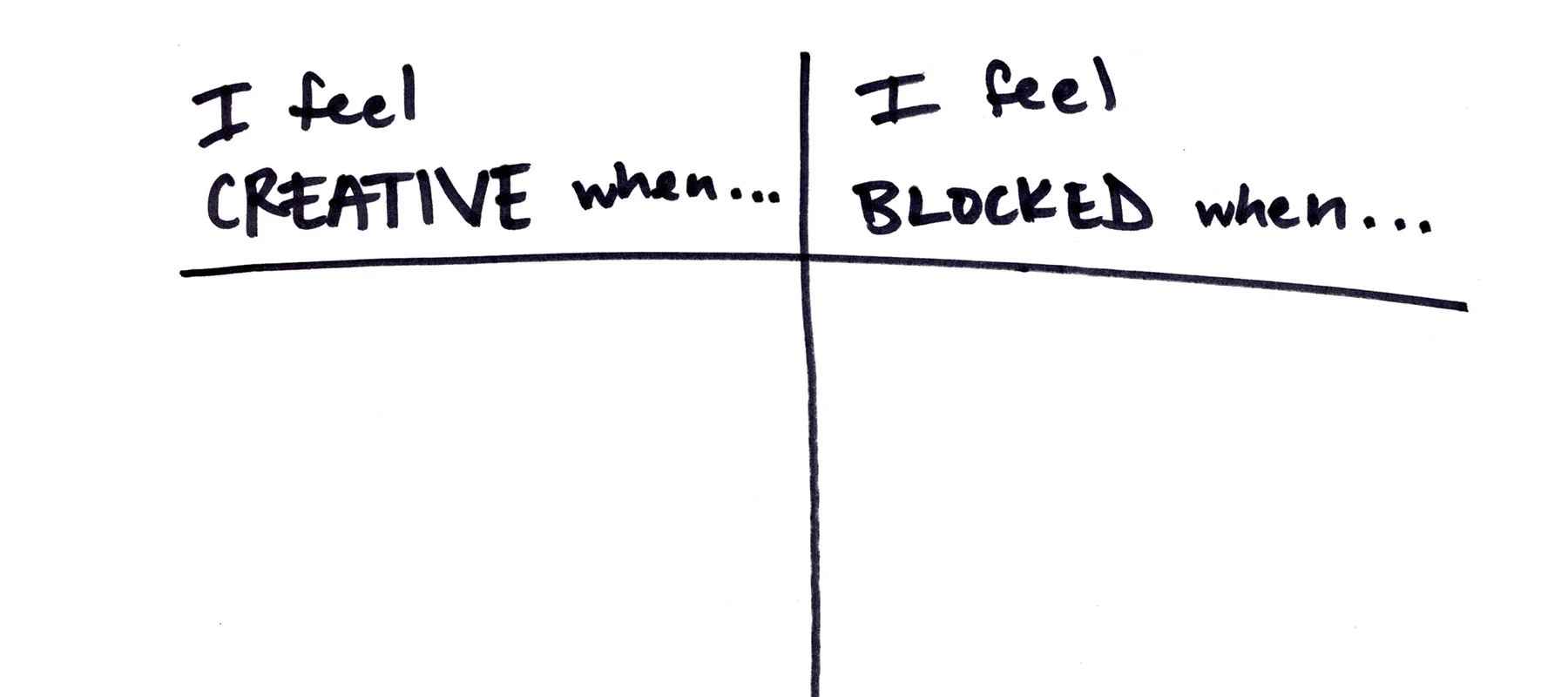
Now, take a look at your two lists. See if you can make any connections between the two. Draw lines if you want to. Notice anything in particular?
There are a bunch of different things that show up on these lists. Teaching this workshop to a variety of groups, I’ve seen everything from cleaning and reorganizing the house to making dinner as activities that feel creative. This is a good reminder that there are all kinds of things that we do in our everyday that help to fuel our creativity, not just when we are engaged in a specific creative act. Creative blocks come in all shapes and forms too, from moments of deep distraction to feeling tired. But what always tends to come across is that the solutions to our creative blocks can be found in the list on the left; even if we don’t have an intentional creative practice, we tend to already know what serves us creatively and what doesn’t.
Tapping into our creativity doesn’t require a secret solution, it requires paying attention to ourselves.
Regular Investments in Creativity
With a better understanding of the things that fuel our creativity, we are going to build our creativity roadmap. I want you to think of all the activities that you either wrote in the list above, or activities that facilitate the emotions that you listed above.
Creative process is ongoing, so we need daily and semi-regular activities that keep us creatively fueled and active (a daily walk, five minutes of quiet time in the morning, cooking a new recipe once a week), but we also need the bigger activities (a trip, a long weekend entirely offline, a creative workshop or retreat), which is why I find it useful to split the activities up as follows:
Daily
Weekly
Monthly
Yearly
Think of these as your creative investments, the things that you do to refuel your creative tank, both big and small. You can interpret this creativity roadmap however you want. Perhaps you want to write these four sections out on one page, maybe you want to draw everything out. When I teach workshops, I often have people make these as a one-page zine, listing out the “why” on the first two pages, and then using the following pages to list out all of the actions they are committing to on a daily, weekly, monthly, and yearly basis. The small, simple, and rough format of a zine is a good metaphor for the fact that while we may work on big projects, and we may have moments of big inspiration, our creativity is sustained through small, simple, and regular acts.
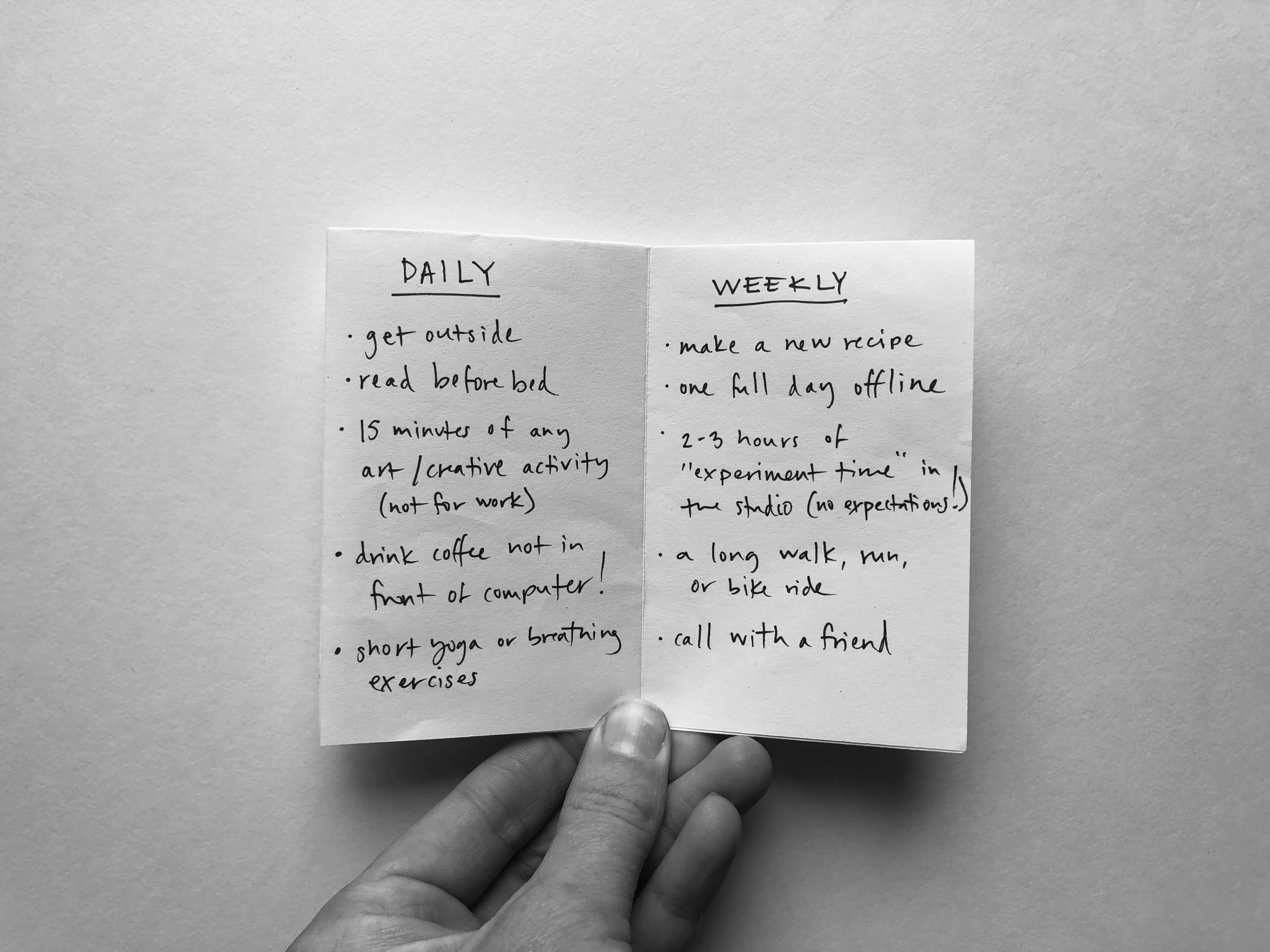
Just like our creative process is always shifting and evolving, so too can our roadmap; consider doing this exercise once or twice a year to check in with where you are and how your creative needs might have changed.
Creativity is the connective tissue that holds humanity together. It is how we show up in the world. It is how we stay awake, how we engage, how we connect, how we interact. That is important regardless of the end result. Because recommitting to our creative process won’t just help us in our creative work, it will also help us be more aware and present in the world around us.
1 June 2021
Words by:Anna Brones
- Share
